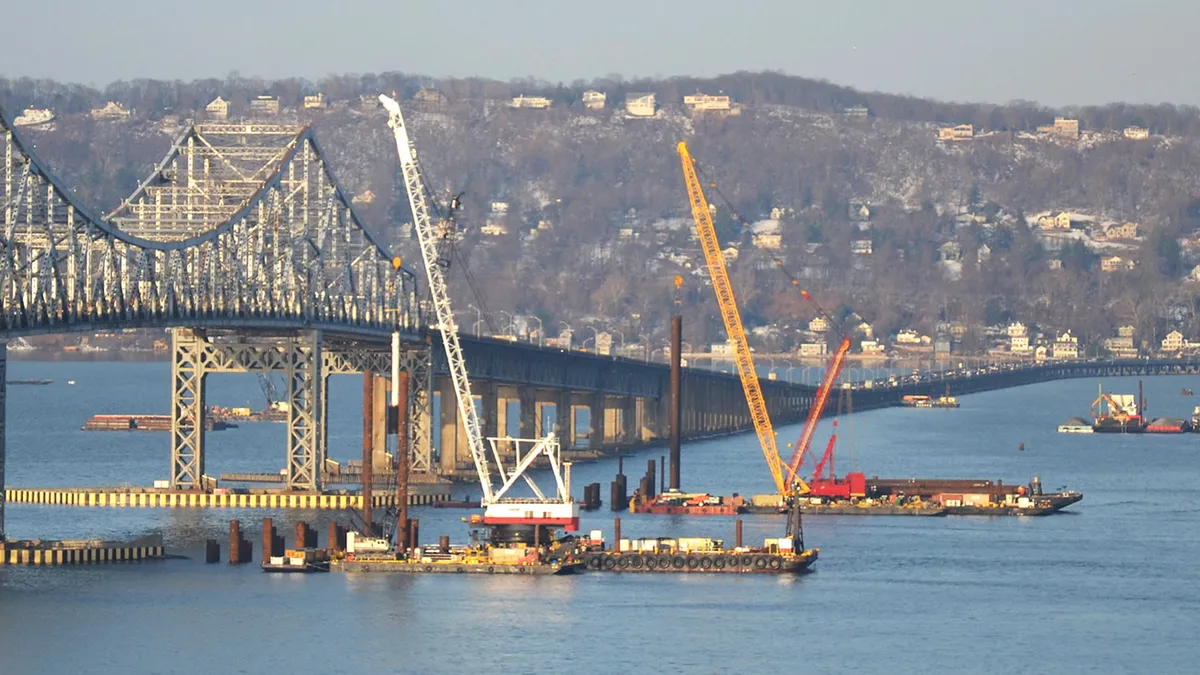Dive Brief:
- A crane being used to build the new $4 billion Tappan Zee Bridge collapsed Tuesday onto the bridge, shutting down all lanes of traffic for several hours and causing minor injury to at least four people, NBC New York reported.
- New York Gov. Andrew Cuomo said the crane, one of 28 currently in use on the bridge, "malfunctioned" while driving piles, and its boom fell across the bridge, causing a small car accident and injuring at least one worker. The crane operator fell into the water but reported no injuries after the Coast Guard rescued him.
- The Tappan Zee, which sees traffic of approximately 138,000 cars every day, connects New York City's northern suburbs. Its replacement has been under construction since 2013 and is scheduled for completion in 2018, according to Business Insider.
Dive Insight:
As the investigation for the cause of the collapse begins, Jeff Loughlin, business manager of Local 137 International Union of Operating Engineers, told NBC New York that the crane operator, who has 20 years of experience, has a good safety record and has tested negative for alcohol and drug use.
In February, a crane collapse onto a Manhattan street killed a pedestrian, injured others and set in motion the enactment of a flurry of new city crane safety rules. This was the first deadly crane accident in New York City since 2008 when two crane collapses in the span of two months killed nine people and caused significant property damage.
After the February incident, New York City Mayor Bill de Blasio instituted a four-point crane safety plan, which included new wind-related restrictions on crawler cranes, increased fines for equipment operators who don't follow safety guidelines, more attention to pedestrian safety during crane operations and a more thorough neighboring-building notification process when cranes are expected to be in use.
Also after the collapse, de Blasio announced that the city would increase monetary penalties for serious construction site violations four-fold as part of a subsequent "safety sweep" of an estimated 1,500 job sites.












